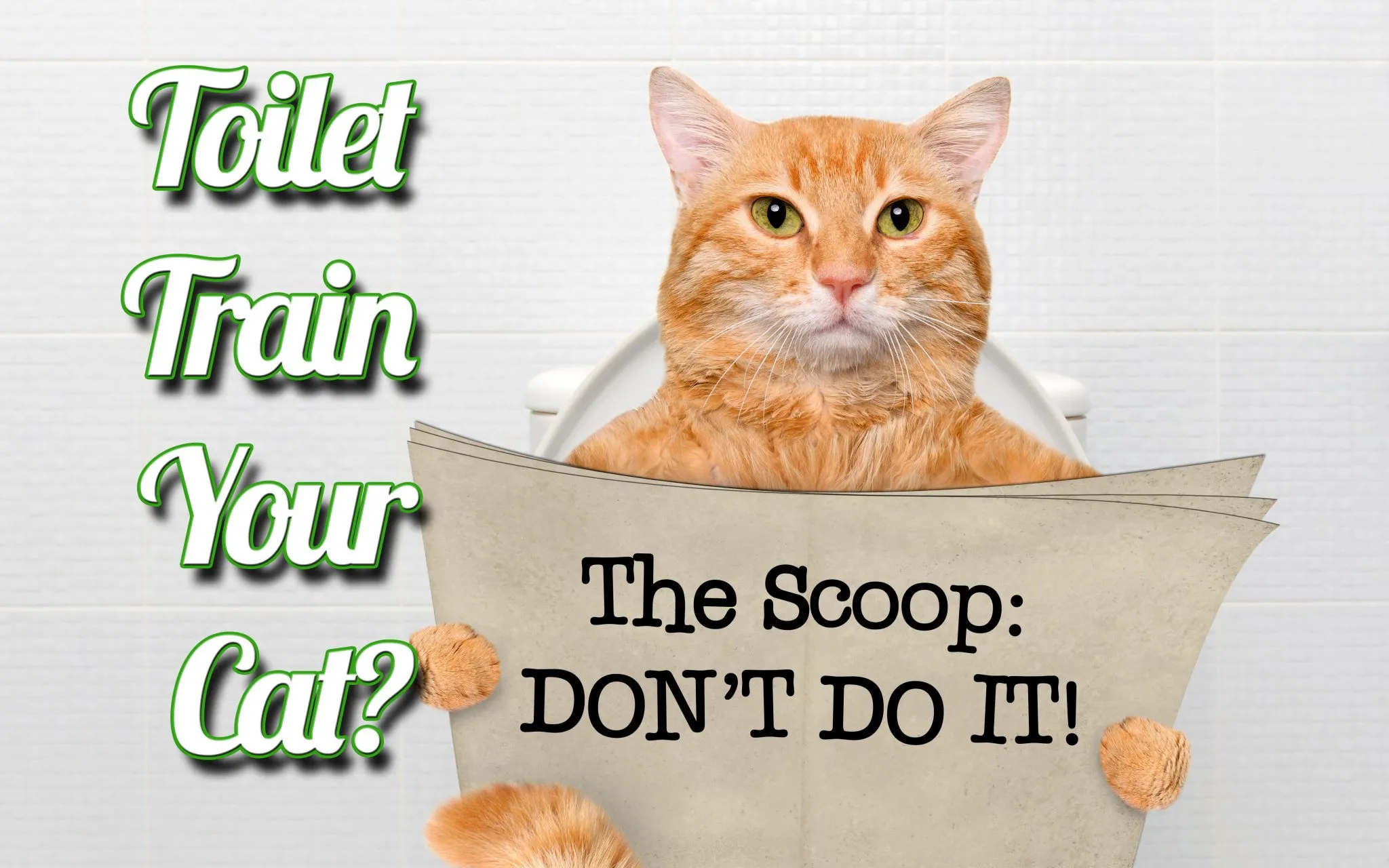Bringing a cat into your home is a joy, but dealing with litter box duties can feel overwhelming. Many cat owners search for “toilet training cats” as a convenient solution, hoping to skip scooping altogether. However, this approach often leads to more problems than it solves. If your cat has started avoiding the toilet or pooping elsewhere, like in the story of one owner whose cats regressed after years of success, it’s time to reconsider. Instead of pushing unnatural habits, focus on proper litter box training for a stress-free life.
The good news? Transitioning back is simple: Start by introducing a quality potty training kit for cats, place it in a quiet spot, and scoop daily. This respects your cat’s instincts while keeping your home clean.
It’s Not Natural Cat Behavior
Cats are wired for specific elimination habits that go beyond just “going potty.” In the wild, they dig, bury, and scent-mark their waste to communicate territory and avoid predators. Domestic cats retain this drive, using urine and feces to signal presence to other felines—even in a household with multiple cats.
Flushing everything away deprives them of this essential feedback loop. Without smelling their own scents, cats can feel disoriented, leading to stress. According to feline behavior experts from the American Association of Feline Practitioners (AAFP), suppressing natural scratching and burying behaviors heightens anxiety, often resulting in inappropriate elimination outside the box.
A litter box mimics their preferred substrate—soft, diggable material—allowing them to perform these rituals comfortably. Toilet training forces them into a human-centric routine, ignoring millions of years of evolution.
You Could Miss Critical Health Signals
Monitoring your cat’s waste is a frontline health check. Changes in urine volume, frequency, or color can signal urinary tract infections (UTIs), which affect up to 10% of cats annually, per studies from the Journal of Feline Medicine and Surgery. Fecal inconsistencies might indicate parasites, dietary issues, or digestive disorders.
Scooping a litter box lets you spot these early: Is the urine darker? Less frequent voids? Softer stools? With a toilet, waste vanishes instantly, often diluted in water, masking vital clues. Vets like Dr. Gary Richter emphasize daily litter checks as a simple way to catch issues before they become emergencies, potentially saving lives.
For older cats or those with chronic conditions, this visibility is crucial. Don’t risk overlooking diabetes, kidney disease, or constipation hidden by a flush.
 Cat looking uncomfortable near toilet, highlighting risks of toilet training
Cat looking uncomfortable near toilet, highlighting risks of toilet training
Physical Stress and Balance Challenges
Imagine a cat leaping onto a slick, funnel-shaped toilet seat with a gaping hole in the center. The plastic is slippery, especially when wet, and requires perfect balance—front paws forward, hindquarters hovering precariously over the bowl. Add constipation, diarrhea, or even a full bladder, and it’s a recipe for disaster.
Young cats might manage, but seniors with arthritis (common in 90% of cats over 12, per Cornell Feline Health Center) struggle with the jump and stance. The instability causes muscle strain, joint pain, and fear. In contrast, a litter box offers stable footing on absorbent litter, letting cats position naturally without slipping into cold, contaminated water.
Many owners report cats refusing the toilet after one slip, reinforcing why litter boxes win for comfort and safety.
One Bad Experience Can Ruin It Forever
Cats learn from negative events quickly—a single plunge into the bowl leaves them soaked, scared, and traumatized. “Never again,” they think, opting for floors, laundry, or carpets instead. This aversion is hardwired for survival, making retraining a nightmare.
Behaviorists note that such incidents trigger aversion strong enough to override prior training. If your cat was toilet-trained but now poops elsewhere, this could be the culprit. Solve it with the best way to train a cat to use litter box, rebuilding confidence step-by-step.
Your Cat Will Find Alternatives—And You’ll Regret It
Inevitably, discomfort, stress, or mishaps drive cats to rebel. They seek soft, accessible spots: bedding, rugs, corners. By then, habits form—substrate preferences for fabric over litter, or location aversions—requiring professional intervention.
Fixing soiled carpets, walls, or upholstery costs hundreds, not to mention the emotional toll on a stressed cat. Consultations for litter box avoidance dominate cat behavior cases, often tracing back to misguided toilet training.
If your kitten avoids the box, check our guide on kitten not using litter box for proactive tips.
The Better Path: Perfect Litter Box Setup
Ditch the toilet lid permanently and invest in 1-2 litter boxes per cat, placed in low-traffic, accessible areas. Use unscented, clumping litter; scoop daily; deep-clean weekly with mild soap. Automatic boxes or enclosed ones reduce odor without stress.
This setup promotes health, happiness, and harmony. No one loves scooping, but it’s far easier than chasing messes or vet bills. For fun bonuses, even teach tricks like how to train your cat to high five.
In summary, toilet training cats disrupts instincts, hides health issues, causes physical strain, and invites bigger problems. Embrace litter boxes for a natural, reliable solution. Consult your vet for personalized advice, and explore more cat care tips on our site to keep your feline thriving.
References:
- American Association of Feline Practitioners (AAFP) Guidelines on Feline Behavior.
- Journal of Feline Medicine and Surgery: UTI Prevalence in Cats.
- Cornell Feline Health Center: Arthritis in Senior Cats.
